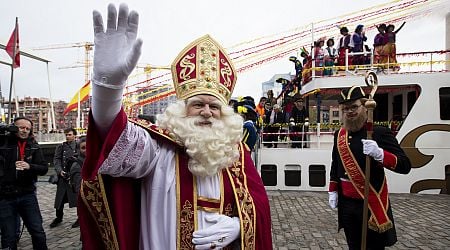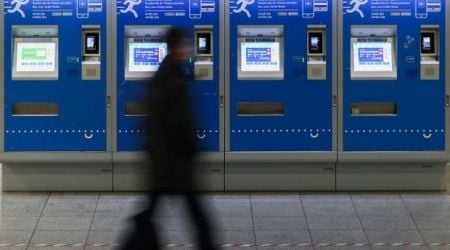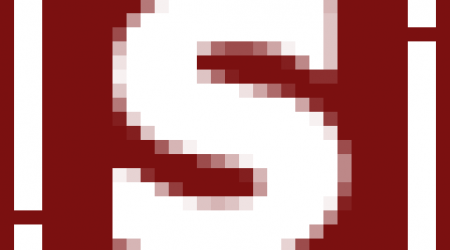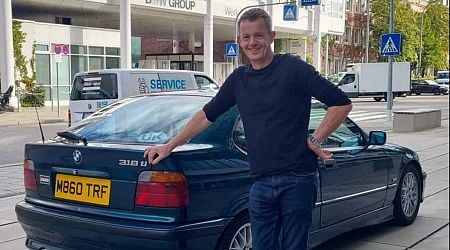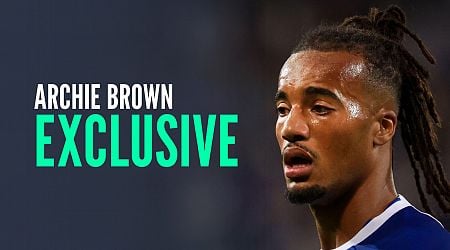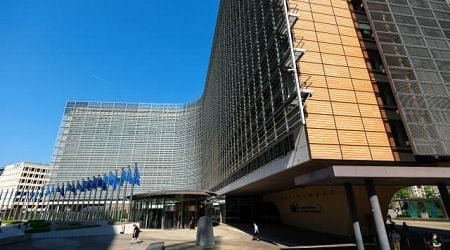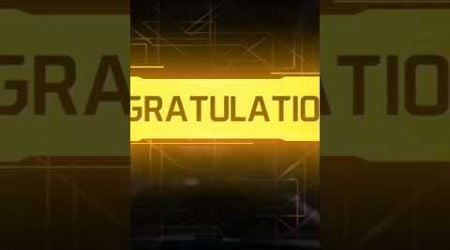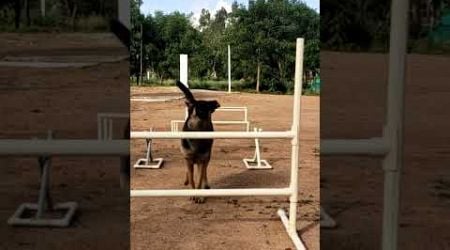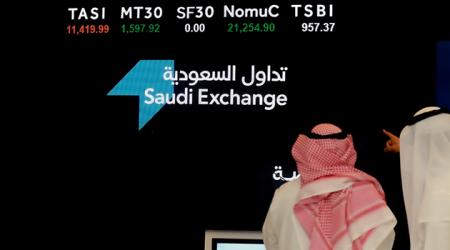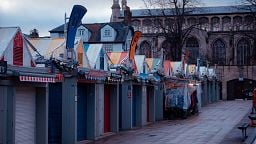Art Pops: Sensory exploration of Belgian masters thanks to contemporary talents at Belfius Art Gallery
The annual showcase of Belgian art by the Belfius Art Gallery aims to be both an emotional and immersive experience for visitors. Art Pops is a sensory encounter with masterpieces from the largest private collection of Belgian art in the country via
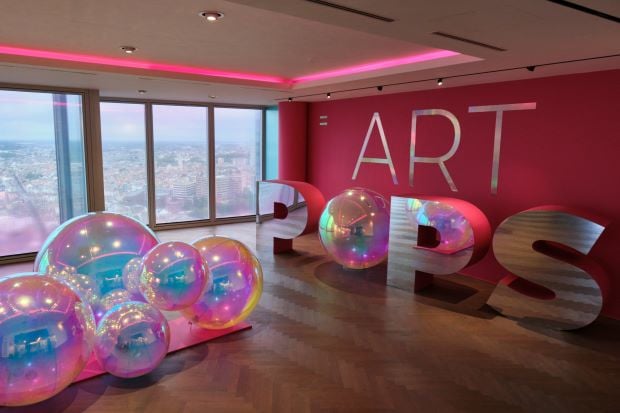
The annual showcase of Belgian art by the Belfius Art Gallery aims to be both an emotional and immersive experience for visitors.
Art Pops is a sensory encounter with masterpieces from the largest private collection of Belgian art in the country via some of the bank’s latest acquisitions by contemporary artists.
The latter include specially-commissioned works designed to further enhance and intensify the experience of viewing art via sound, olfactory, AI and tactile installations as part of a mission to promote Belgian talent.
Grouped around themes such as wind, touch, sight, sound and smell, treasures from the collection spanning some 500 years – including works by Breughel, Magritte, Delvaux and Spillaert – are presented in dialogue with the contemporary pieces.
The exhibition represents a move away from the classic white cube space long favoured for showing art. While benefitting from panoramic views of the capital atop the 32-floor Belfius tower, it eschews a lofty attitude to art in favour of anti-elitist curation.

Serving as an introduction are two monographs by Stefan Peters (1978-) from his series Vistas (pictured) that form an imaginative journey through enigmatic landscapes. Evocative colours and ethereal brushwork straddle dream and reality to create a meditative atmosphere.
The first thematic ‘Feel the invisible’ evokes a gentle breeze and shifting perspective. Superimposing a figurative painting by Brussels-based Aurélie Gravas (1977-) are several layers of wispy veils - their gusting movements fuelled by a fan - that filter the viewer’s outlook. The pastel colours reflect the pigments in her work, the shapes replicate their curves and forms.

The wind picks for the next section, which includes an eight metre canvas of a tempest unleashing angry waves. A muted Luc Tuymans painting of sailing boats and a ceramic installation by Piet Stockmans lead to two luminous suns (pictured) by Lionel Estève (1967-). The one in red represents the full glare of the rising sun at the height of summer, while the cooler one in yellow tones portrays the sun in winter.

Nature has forever inspired artists. A collection of paintings by artists of the Flemish Latem School pay homage to the wind and clouds. Among them is impressionist Emile Claus, expressionist Constant Permeke and Jenny Montigny, an oft-overlooked artist who studied under Claus. Her scenes of daily life were part of the luminism art movement. Reflecting the bright fuchsia hue in one of her paintings are a series of tactile 3D mosses decorating the walls (pictured).

Two suspended clouds form the intriguing installation Flight to the Future (pictured) by olfactory artist Peter de Cupere (1970-). Created specifically for the exhibition, it invites visitors to place their head into each mass to experience two future versions of our planet. The first reveals an idyllic world in which climate change has been slowed down; a forested landscape with green energy-fuelled water features is accompanied by a fresh piney smell. In the second by contrast, a blackened scene awaits and a searing burning odour of pollution, that makes it impossible to linger.
De Cupere is behind two further olfactory installations. To one side of Brueghel’s glorious painting of a garland of fruit and depiction of Cybele receiving gifts from personifications of the four seasons, stands a small white box that can be opened to release a heady scent inspired by the Renaissance tableau.
“There are 27 different scent molecules in the work,” he says of the woodland nature scene. “It is one of my favourite compositions,” confesses de Cupere, a modern-day alchemist world-renowned for his scented installations that explore the impact of odour on memory, perception and conscience.

He also infused the perfumed oranges that dangle in front of an abstract by George Collignon (pictured), not only replicating the fruit that features in the vivid painting, but literally allowing it to burst from within its slender frame. It is joined by a merry Gille de Binche, courtesy of Pierre Alechinsky; oranges, of course, playing a symbolic role in the carnival tradition.

It’s a daring move to position a large and famous painting by Paul Delvaux so that its back faces the viewer. Fear not, a mirror ensures L’Aube sur la ville remains partially visible. The reverse of the original frame, spotted with labels from its many exhibition journeys, is a fascinating insight. Another perspective of the artist’s studio is provided by Kristof Santy (1987-), whose eclectic collection of art has grown into a cabinet of curiosities, and now includes a self-portrait shown alongside the Belgian master (pictured).

Evoking the liberty of expression that all artists aim for, the section ‘Free as a bird’ features the surrealist Jane Graverol’s majestic painting of a solitary and haughty eagle, the surrounding wall lined with tactile velvety plumage (pictured). The ornithological theme is reinforced with works by contemporary artists Jan Cox, Eva Cardon and Tom Liekens.

Water has long been an inspiration for artists. In the gallery’s black rooms, a series of stark, powerful works by René Magritte, Rinus Van de Velde and Léon Spillaert are the source of a 12-minute original piano and voice soundtrack by Belgian musician Jasper Steverlinck (pictured above left with Peter de Cupere)). It was an exercise that reminded him of his own freedom as a songwriter. “I didn’t want to analyse the works, I just wanted my reaction to the paintings to come out.” This journey into his inner world required trusting his artistic instinct. “Everything is an interpretation of the world we live in and we use our senses to make sense of the world.” He says of the haunting piece: “Afterwards, I noticed that there was a beginning, middle and end, like an analogy of life itself. It starts very quietly, becomes louder and energetic and then is almost meditative, like an acceptance of life.”

In another darkened space, a beautiful mystical landscape by Flemish Renaissance artist Henri Bles (1560), possibly completed by Lucas van Valckenborch (1597), is screened onto the wall (pictured). The artwork, that is undergoing extensive scientific research, has been transformed into an imaginary scene by scenography design company Socle and Fisheye Content with the help of AI. As the painting steps outside its frame, viewers are transported to the original landscape viewed by the artist.
While revealing the diversity of the bank’s collection, the exhibition reinforces how vision is possibly the weakest of all the human senses. “Come and experience Belgian art through all your senses,” says Bénédicte Bouton, Belfius’ head of culture. “Everyone reacts differently according to their culture, so for each spectator this is a very personal experience.”
Art Pops
Until 21 June
Belfius Art Gallery
Place Rogier 11
Brussels
Open 16 and 30 November, 14 december, 11 January, 1 and 15 February, 8 and 22 March, 5 and 26 April, 17 May, 21 June. Book your visit here: belfius.be/art.
Photos: ©Thibaut De Lestré; ©Sarah Crew



















